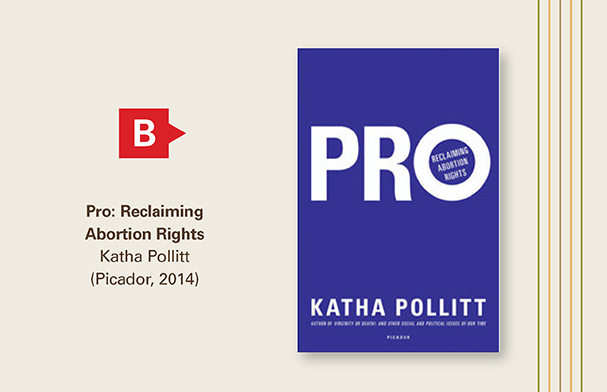This article first appeared in the Review column of the CHRISTIAN RESEARCH JOURNAL, volume 38, number 01 (2015). The full text of this article in PDF format can be obtained by clicking here. For further information or to subscribe to the CHRISTIAN RESEARCH JOURNAL go to: http://www.equip.org/christian-research-journal/
In 1992, Bill Clinton campaigned on the premise that abortion should be “safe, legal, and rare.” As to why it should be rare, he never told us. Indeed, during his two terms as president, Clinton rejected every attempt to limit the abortion license, even vetoing a bill that said you can’t pierce the skull of a partially born fetus and suck out his brain. Abortion, though bad, was necessary to preserve the social health of women.
Politically, he got away with it. For millions of Americans, it was enough that Clinton felt sorry about abortion. As journalist Christopher Caldwell points out, Americans love to condemn abortion with words, but keep the option legally available in case they need it. “Even where Americans claim to disapprove most strongly of abortion, they booby-trap their disapproval so that it never results in the actual curtailment of abortion rights. A pro-life regime is not really something Americans want—it’s just something they feel they ought to want.”1
Feminist Katha Pollitt is sick of the political doublespeak. Why do defenders of abortion need to apologize for anything? Abortion is both a moral right and a social good, a common event in the reproductive lives of women. “Why can’t a woman just say, This wasn’t the right time for me?” Only those with a deep contempt for the female sex question her saying so. Sure, in American public discourse, the safest place to be is in the middle, lamenting the extremes on both sides. But this concedes too much ground to abortion opponents. If we don’t turn over to authority figures a woman’s decision to marry or go to work, why turn over her personal choices about motherhood? Even our language gives up ground it shouldn’t. For example, the term “pro-life” casts abortion opponents as lifesavers, when in fact many are motivated by a sectarian desire to force their religious views on a pluralistic society. In short, Pollitt insists that it’s an affront to women when pro-choice advocates settle for anything less than legal abortion “on demand” and without apology. And she’s not the least bit sorry if that offends her opponents.
In fact, Pollitt has no intention of converting pro-lifers. Her stated purpose is to awaken a sleeping giant—namely, the millions of Americans with “pro-choice” sentiments who remain uninvolved and complacent in the abortion debate. At the same time, she hopes “that by laying out the logic—or rather, the illogic—of the anti-choice position,” she can persuade a few people in the middle to embrace abortion on demand.
Along the way, she gets some things right. Pro-lifers who overstate the physical effects of legal abortion are talking out of both sides of their mouths. On one hand, they argue that illegal abortion did not result in high complication rates once suction machines made those clandestine procedures safe. On the other hand, they argue that legal abortion—performed with those same suction machines—harms many women today. Absurd. And if pro-lifers truly believe embryos are human, they shouldn’t use reproductive technologies that put excess embryos at risk.
Beyond that, careful attention to logical reasoning is precisely what’s missing in much of Pollitt’s book. What exactly is the “anti-choice” position she finds so illogical? Reading through the text, I kept waiting for a decisive blow to the following pro-life syllogism:
Premise #1: It is wrong to intentionally kill innocent human beings.
Premise #2: Abortion intentionally kills innocent human beings.
Therefore,
Conclusion: Abortion is morally wrong.
That blow never came. Instead, Pollitt more or less responds with a mix of ad-hominem attacks, poor science, and assertions masquerading as arguments. Suppose we grant that pro-lifers are anti-woman, against birth control, religiously motivated, insensitive to poor women, and just want to control women’s sexuality. Let’s further suppose they grieve the loss of five-year-olds more than they do the loss of embryos in fertility clinics. What follows? How do those alleged flaws refute the pro-life argument that the unborn are human and that intentionally killing them is wrong? At best, it shows that pro-life advocates are inconsistently applying their ethic, not that their arguments for the humanity of the unborn are bad.
Pollitt fares no better with science. Again and again she calls embryos “fertilized eggs,” when in fact anyone who’s ever consulted a standard embryology textbook knows she’s substituting a label for an argument. Embryos are not “fertilized eggs” for the simple reason that sperm and egg die in the act of fertilization. That is, each surrenders its constituents into the make up of a new living organism—in this case, the human embryo. T. W. Sadler’s Langman’s Medical Embryology states: “The development of a human begins with fertilization, a process by which the spermatozoon from the male and the oocyte from the female unite to give rise to a new organism, the zygote.”2 In short, Pollitt confuses parts with wholes. Sperm and egg are parts of larger human beings while the embryo is a whole (albeit immature) human being at the earliest stages of development.
At times, she simply assumes the unborn are not human, as when she writes that abortion “is a good thing for society” because it’s “good for everyone” if women only have the children they want. Are the unborn part of that society? And does “everyone” include the unborn? Meanwhile, after a dozen or so references to “fertilized eggs,” I couldn’t help but recall a 1970 editorial in California Medicine that conceded the scientific ground to pro-lifers. The authors—sympathetic to abortion—note that language can be used to get around inconvenient truths: “The result has been a curious avoidance of the scientific fact, which everyone really knows, that human life begins at conception and is continuous whether intra- or extra-uterine until death. The very considerable semantic gymnastics which are required to rationalize abortion as anything but taking a human life would be ludicrous if they were not often put forth under socially impeccable auspices.”3
Though dismissive of embryos as “pea-sized,” “lentil-sized,” and “shrimp-like,” Pollitt concedes their humanity on page 68: “Obviously, a fertilized egg is human—it isn’t a feline or canine—and it’s alive and it is a being in the sense that it exists.” But she does not think all humans are equal. There’s a class of human nonpersons that we can kill and a class of human persons that we can’t. Embryos are not “human beings in the ordinary sense of the term” and they are not “persons” in the same way a woman is. Oh? Why should we believe that? Given Pollitt concedes the humanity of the unborn, an inquiring pro-lifer might ask what essential difference exists between Pollitt the embryo and Pollitt the adult that would justify killing her at that earlier stage of development. Her reply: embryos fail to qualify because they are too small (“the size of a pea”), too undeveloped, can’t think or feel, can’t communicate, aren’t conscious, aren’t self-aware, don’t look like children, and don’t function like the rest of us—to name a few.
But why are those characteristics value-giving in the first place? Pollitt presents no argument why any of them are decisive. She merely asserts they are so. Suppose we pick consciousness as decisive. Do we mean one must be able to exercise it immediately, or do we mean something else? As Christopher Kaczor points out, requiring actual consciousness renders us nonpersons whenever we sleep. Requiring immediately exercisable consciousness excludes those in surgery. Requiring the basic neural brain structures for consciousness (but not consciousness itself) excludes those whose brains are temporarily damaged. On the other hand, if having a particular nature from which the capacity for consciousness is present makes a being a person—even if one can’t currently exercise that capacity—then those sleeping, in surgery, or temporarily comatose are persons, but so also is the human embryo, fetus, and newborn.4
Moreover, Pollitt’s functionalist account of human value proves too much. As abortion advocate Peter Singer points out in Practical Ethics, if self-awareness determines value, and newborns and fetuses lack it, both are disqualified from the community of persons.5 You can’t draw an arbitrary line at birth and spare the newborn. Nor can you adequately account for human equality. If humans have value because of some degreed property like self-awareness, why shouldn’t those with more of that characteristic have a greater right to life than those with less—born or unborn? After all, development does not end at birth.
At the end of the day, the abortion debate is not about a surgical procedure, but a more foundational question: who counts as one of us? Thoughtful defenders of abortion such as David Boonin, Peter Singer, Michael Tooley, and Jeff McMahan—though I disagree with their conclusions—engage pro-life thinkers on that fundamental question and in so doing make a helpful contribution to the debate. In return, pro-life thinkers are crafting scholarly responses that have caught the attention of some of their most vocal critics. In a 2008 Los Angeles Times op-ed piece, abortion-choice advocates Kate Michelman and Frances Kissling lament that a new generation of pro-life advocates present “a sophisticated philosophical and political challenge” to what once was considered a settled debate.6
Pollitt largely ignores that challenge. She dreams of a day when cleaning out wombs is just another form of housekeeping. Nowhere in her text do you get the sense she’s interacted with leading pro-life thinkers such as Francis Beckwith, Maureen Condic, or Christopher Kaczor. And while Pollitt may indeed fire up like-minded abortion-advocates, she’s no pro when it comes to engaging the best arguments from pro-life apologists.
Scott Klusendorf is president of Life Training Institute and author of The Case for Life: Equipping Christians to Engage the Culture (Crossway, 2009).
NOTES
- Christopher Caldwell, “Why Abortion Is Here to Stay,” The New Republic, April 5, 1999.
- T. W. Sadler, Langman’s Medical Embryology, 7th ed. (Baltimore: Williams and Wilkins, 1995), 3.
- Malcolm S. M. Watts, “A New Ethic for Medicine and Society,” California Medicine, September 1970.
- Christopher Kaczor, The Ethics of Abortion: Women’s Rights, Human Life, and the Question of Justice (New York: Routledge, 2011), 53.
- Peter Singer, Practical Ethics (Cambridge: Cambridge University Press, 1997), 169–71.
- Frances Kissling and Kate Michelman, “Abortion’s Battle of Messages,” Los Angeles Times, January 22, 2008.
*Text has been updated since original posting.*









